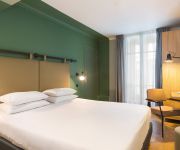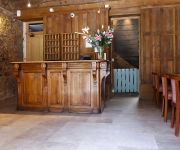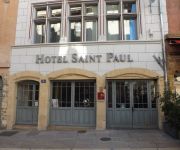Facts and Data
Webpages:
Official Unesco Page
www.patrimoine-lyon.org
Le patrimoine lyonnais (In French)
Site historique de Lyon (Mairie de Lyon)
View photos from OUR PLACE the World Heritage collection
Basis Data:
Unesco World heritage since: 1998
Size of heritage: 427 ha
- Buffer zone: 323 ha
Coordinates:
Longitude: 4,833°
Latitude: 45,767°
Summary
The long history of Lyons, which was founded by the Romans in the 1st century B.C. as the capital of the Three Gauls and has continued to play a major role in Europe's political, cultural and economic development ever since, is vividly illustrated by its urban fabric and the many fine historic buildings from all periods.
Location on Map
Show bigger map on Openstreetmap
Historic Site of Lyons: A Glimpse into France's Rich History
The Historic Site of Lyons, located in the Department of Rhône in the Rhône-Alpes region of France, is a UNESCO World Heritage site that offers a captivating journey through centuries of history. This remarkable site encompasses the entire city center of Lyons, which is renowned for its exceptional architectural and cultural heritage.
History
The history of Lyons dates back over 2,000 years, making it one of the oldest cities in France. Founded by the Romans in 43 BC, it quickly became a major economic and political hub. The city flourished during the Roman era, serving as the capital of Gaul and an important trading center.
Over the centuries, Lyons witnessed the rise and fall of various civilizations, each leaving their mark on the city's landscape. From the medieval period to the Renaissance and beyond, Lyons continued to thrive as a center of commerce, industry, and culture.
During the 19th century, Lyons played a crucial role in the development of the textile industry, earning the nickname "the silk capital of the world." This period of industrialization brought about significant urban transformations, with the construction of grand boulevards, majestic squares, and elegant buildings.
Current State
Today, the Historic Site of Lyons stands as a testament to the city's rich and diverse history. The site covers an area of approximately 500 hectares and encompasses over 2,000 years of architectural heritage.
One of the most iconic landmarks within the site is the Basilica of Notre-Dame de Fourvière, a stunning example of 19th-century ecclesiastical architecture. Perched atop Fourvière Hill, the basilica offers breathtaking panoramic views of the city and is a popular pilgrimage site.
The Vieux Lyon, or Old Lyon, is another highlight of the site. This medieval district is characterized by its narrow cobblestone streets, Renaissance courtyards, and well-preserved historic buildings. Visitors can explore the traboules, hidden passageways that once served as shortcuts for silk merchants, and admire the charming facades of the Renaissance-era houses.
The Presqu'île, the peninsula between the Rhône and Saône rivers, is the heart of Lyons' commercial and cultural life. Here, visitors can stroll along the elegant Rue de la République, admire the grand façade of the Hôtel de Ville (City Hall), and explore the bustling shopping districts.
The Historic Site of Lyons also includes the Confluence district, an area that has undergone significant urban redevelopment in recent years. This modern neighborhood seamlessly blends contemporary architecture with historic industrial buildings, creating a unique and vibrant atmosphere.
Overall, the Historic Site of Lyons offers a captivating journey through time, allowing visitors to immerse themselves in the city's rich history and experience its unique blend of architectural styles. From Roman ruins to medieval alleyways and grand boulevards, Lyons is a treasure trove of cultural heritage that continues to captivate visitors from around the world.
Hotels and places to stay
Grand Hotel des Terreaux
Hôtel Silky by HappyCulture
College
Hôtel de Paris
Le Phenix
Citadines Presqu'ile Lyon
Elysee hotel
Hotel Saint-Vincent
Mon Hôtel Particulier
Saint Paul
Videos from the area
Videos provided by Youtube are under the copyright of their owners.

















